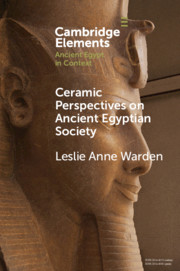Element contents
Ceramic Perspectives on Ancient Egyptian Society
Published online by Cambridge University Press: 25 May 2021
Summary
- Type
- Element
- Information
- Online ISBN: 9781108881487Publisher: Cambridge University PressPrint publication: 24 June 2021
References
- 11
- Cited by

